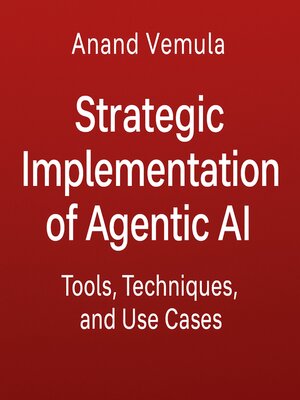Strategic Implementation of Agentic AI Tools, Techniques, and Use Cases
audiobook (Unabridged)
By Anand Vemula

Sign up to save your library
With an OverDrive account, you can save your favorite libraries for at-a-glance information about availability. Find out more about OverDrive accounts.
Find this title in Libby, the library reading app by OverDrive.



Search for a digital library with this title
Title found at these libraries:
| Library Name | Distance |
|---|---|
| Loading... |
This audiobook is narrated by a digital voice.
Strategic Implementation of Agentic AI provides a comprehensive, practice-driven roadmap for deploying autonomous agents across real-world enterprise environments. The book is structured into four major parts—principles and deployment, tools and techniques, enterprise use cases, and strategic foresight—offering a 360-degree view of agentic AI from foundational theory to advanced integration.
Beginning with the core capabilities of agentic systems such as autonomy, proactivity, and goal orientation, the book lays out design methodologies that align AI behavior with organizational intent. It covers infrastructure design, from cloud-native deployments to agent platforms like LangChain and AutoGen, while addressing security, privacy, and responsible governance.
The second section explores the technical backbone of agentic AI: agent-oriented programming, prompt engineering, memory architectures, multi-agent coordination, and telemetry feedback loops. Each chapter demonstrates how to build scalable, modular agents with adaptive learning and decision-making capacity.
Real-world applications take center stage in the third part. Readers gain insight into agent deployment in business operations, sales, healthcare, education, manufacturing, and more—uncovering how agents optimize workflows, support decision-making, and enable human-machine collaboration at scale.
The final part focuses on strategic alignment, scaling ecosystems, ethics, regulatory impacts, and future planning. It offers tools to assess maturity, define KPIs, and envision a path toward intelligent, resilient, and ethical agentic ecosystems.
Written for technologists, architects, and enterprise leaders, this book bridges vision and implementation—offering a pragmatic guide to turning autonomous AI into a core strategic capability.







